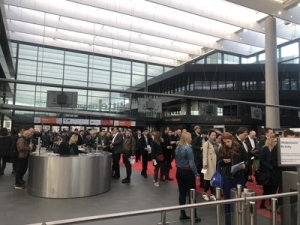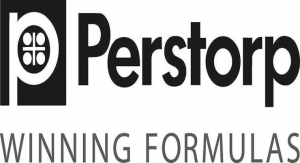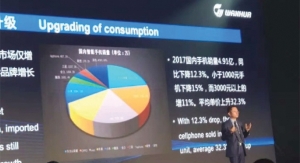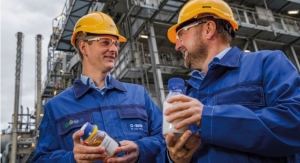Sean Milmo, European Correspondent05.10.19
Europe’s coatings producers are currently focusing on expanding their use of renewables and biological raw materials. But the objective is not just about the need to help tackle climate change.
Coatings manufacturers and their suppliers are also responding to other influences like the improvement of people’s wellbeing by reducing pollution to improve air quality in urban streets and inside buildings. Also, they want to cut down on the use of solvents and substances of high concern because they are dangerous both to the environment and human health.
They are having to react to a broad range of demands among European consumers and industrial customers who want healthier surroundings and a safer environment whose resources will be protected through the recycling and reuse of products and materials in circular economies.
European Coatings Show Focuses on Raw Materials
These influences were among the most evident at the European Coatings Show (ECS) in Nuremberg, Germany, in March, comprising a three-day exhibition and a two-day conference mainly concentrating on new technological developments in the industry. The emphasis on sustainability had been strengthening at the bi-annual event in recent years but it was most prominent at this year’s ECS.
At the same time, however, there were continuing concerns about the higher costs of switching to greener and cleaner materials, some of which may have lower performance levels.
Also, another challenge is the additional expense linked to the R&D needed to develop new materials.
Regulations Place More Challenges on Raw Material Suppliers
Meanwhile, regulations in Europe have been becoming more stringent as coatings producers and their materials suppliers are required to provide increasing amounts of data on the safety of the chemicals in their formulations.
However, there seemed to be at the ECS few exhibitors or conference speakers who favored a strategy based entirely on the traditional fossil-based chemicals or formulations. There were few either who were pursuing a policy in which a prominent role was not given to sustainability.
“For too long, there has been a general feeling that you either do well in business or do good for the environment—that you have to choose between performing well financially and contributing to a better world,” explained Helen Hets, president of DSM Resins & Functional Materials. “We strongly believe that doing good and well go hand-in-hand.”
DSM is trying to strengthen its position as a leading environmentally friendly producer of coatings resins by setting itself targets like having by 2030 a minimum 30 percent of raw materials being biobased or recycled.
By then it aims also to have reduced its greenhouse gas (GHG) emissions to 30 percent compared to 2016 levels and to have ensured that at least 75 percent of its purchased electricity will be from renewables.
Now companies like DSM, with a well-established reputation in the coatings sector for their pursuit of sustainability goals, are facing much stronger competition in maintaining their prominent eco images. Many other suppliers of coatings materials are now trying to do the same.
Perstorp, the Swedish company whose main business is in resins and coatings materials supplies, was promoting itself at the show as a leader in “pro-environment” solutions.
This was through an expanded portfolio of independently-certified renewable or part-renewable products and drop-in materials which will help its customers reduce their carbon footprints.
“We have the disadvantage of being well down the value chain where it’s the brand owners and those closest to consumers who have the biggest interest in sustainability,” said Elisa Swanson-Perbaeck, Perstorp’s global marketing manager.
Meanwhile, the specialist bio-material suppliers are concentrating on broadening the performance and functions on their materials as well as improving their logistics so that they meet a greater variety of coatings producers’ needs.
Belgian-based Scaldis-Ruien supplies, for example, low viscosity linseed oils as a starting material for alkyd resins and varnishes production and high viscosity versions to be used as a sole binder in paints and primers.
The company is well located to take advantage of what has now become the main supply chain for linseed in Europe stretching from producers in Russia and Kazakhstan to the Belgian port of Ghent.
However, coatings are not the only European sector in which there has been a big switch to biomaterials.
This is resulting in more frequent imbalances between supply and demand, which causes scarcity and fluctuations in prices, often influenced by trends in the Chinese market.
In addition to the coatings and inks sectors, pine tree chemicals are now a source of materials for a range of products like perfumes and cosmetics, vitamins, household cleaners, food additives and adhesives.
“Producers from these other sectors move in and out of the pine chemicals market,” explained Gert-Jan van Ruler, business development manager at DRT, a French resins producer. “Currently we are having to compete for supplies more and more with vitamins producers who have been turning to natural materials because of problems with synthetic supplies.”
The sustainability drive which was so conspicuous at the ECS was not just confined to biomaterials and renewables.
A major priority for many participants was showing ways of reducing volatile organic compounds (VOCs) through the use of formulations and chemicals based on fossil, bio or renewable materials.
A prominent means of decreasing VOC levels was through water-borne coatings. A poll of the conference audience by the publishers of the ECS daily newspaper, Hanover-based Vincentz Network, two-thirds selected water-borne coatings as being the most important future technologies.
The polyurethane market was a sector in which water-borne innovations were displayed as a means of not only being greener than solvent-borne systems but also at least equal in performance – with or without bio or renewable materials.
Covestro showed a water-based PUR system with a drying time which had been reduced from six to two hours. “That is similar to the drying times of solvent-borne systems,” said a company official.
Hexion introduced at the ECS a range of resins based on vinyl silane monomers which are isocyanate-free yet have the same high, fast-curing performance of polyurethane two-component (2K) coatings.
Another theme of the show was the use of fewer components in formulations to achieve more, particularly with additives.
Michael Steiner of Hemmelrath Nanotechnologies gave details at the ECS conference of a spacer technology which uses a low-viscous dispersion of electrosterically stabilized nano barium sulfate to physically prevent pigment particles from sedimentation
and agglomeration.
The technology can significantly reduce the application of conventional stabilization additives so that overall raw material and production costs can be cut by 50 percent.
Simplification of formulations, together with the conserving of resources through recycling and reuse of materials in circular economies, could be major trends at future European Coatings Shows.
Coatings manufacturers and their suppliers are also responding to other influences like the improvement of people’s wellbeing by reducing pollution to improve air quality in urban streets and inside buildings. Also, they want to cut down on the use of solvents and substances of high concern because they are dangerous both to the environment and human health.
They are having to react to a broad range of demands among European consumers and industrial customers who want healthier surroundings and a safer environment whose resources will be protected through the recycling and reuse of products and materials in circular economies.
European Coatings Show Focuses on Raw Materials
These influences were among the most evident at the European Coatings Show (ECS) in Nuremberg, Germany, in March, comprising a three-day exhibition and a two-day conference mainly concentrating on new technological developments in the industry. The emphasis on sustainability had been strengthening at the bi-annual event in recent years but it was most prominent at this year’s ECS.
At the same time, however, there were continuing concerns about the higher costs of switching to greener and cleaner materials, some of which may have lower performance levels.
Also, another challenge is the additional expense linked to the R&D needed to develop new materials.
Regulations Place More Challenges on Raw Material Suppliers
Meanwhile, regulations in Europe have been becoming more stringent as coatings producers and their materials suppliers are required to provide increasing amounts of data on the safety of the chemicals in their formulations.
However, there seemed to be at the ECS few exhibitors or conference speakers who favored a strategy based entirely on the traditional fossil-based chemicals or formulations. There were few either who were pursuing a policy in which a prominent role was not given to sustainability.
“For too long, there has been a general feeling that you either do well in business or do good for the environment—that you have to choose between performing well financially and contributing to a better world,” explained Helen Hets, president of DSM Resins & Functional Materials. “We strongly believe that doing good and well go hand-in-hand.”
DSM is trying to strengthen its position as a leading environmentally friendly producer of coatings resins by setting itself targets like having by 2030 a minimum 30 percent of raw materials being biobased or recycled.
By then it aims also to have reduced its greenhouse gas (GHG) emissions to 30 percent compared to 2016 levels and to have ensured that at least 75 percent of its purchased electricity will be from renewables.
Now companies like DSM, with a well-established reputation in the coatings sector for their pursuit of sustainability goals, are facing much stronger competition in maintaining their prominent eco images. Many other suppliers of coatings materials are now trying to do the same.
Perstorp, the Swedish company whose main business is in resins and coatings materials supplies, was promoting itself at the show as a leader in “pro-environment” solutions.
This was through an expanded portfolio of independently-certified renewable or part-renewable products and drop-in materials which will help its customers reduce their carbon footprints.
“We have the disadvantage of being well down the value chain where it’s the brand owners and those closest to consumers who have the biggest interest in sustainability,” said Elisa Swanson-Perbaeck, Perstorp’s global marketing manager.
Meanwhile, the specialist bio-material suppliers are concentrating on broadening the performance and functions on their materials as well as improving their logistics so that they meet a greater variety of coatings producers’ needs.
Belgian-based Scaldis-Ruien supplies, for example, low viscosity linseed oils as a starting material for alkyd resins and varnishes production and high viscosity versions to be used as a sole binder in paints and primers.
The company is well located to take advantage of what has now become the main supply chain for linseed in Europe stretching from producers in Russia and Kazakhstan to the Belgian port of Ghent.
However, coatings are not the only European sector in which there has been a big switch to biomaterials.
This is resulting in more frequent imbalances between supply and demand, which causes scarcity and fluctuations in prices, often influenced by trends in the Chinese market.
In addition to the coatings and inks sectors, pine tree chemicals are now a source of materials for a range of products like perfumes and cosmetics, vitamins, household cleaners, food additives and adhesives.
“Producers from these other sectors move in and out of the pine chemicals market,” explained Gert-Jan van Ruler, business development manager at DRT, a French resins producer. “Currently we are having to compete for supplies more and more with vitamins producers who have been turning to natural materials because of problems with synthetic supplies.”
The sustainability drive which was so conspicuous at the ECS was not just confined to biomaterials and renewables.
A major priority for many participants was showing ways of reducing volatile organic compounds (VOCs) through the use of formulations and chemicals based on fossil, bio or renewable materials.
A prominent means of decreasing VOC levels was through water-borne coatings. A poll of the conference audience by the publishers of the ECS daily newspaper, Hanover-based Vincentz Network, two-thirds selected water-borne coatings as being the most important future technologies.
The polyurethane market was a sector in which water-borne innovations were displayed as a means of not only being greener than solvent-borne systems but also at least equal in performance – with or without bio or renewable materials.
Covestro showed a water-based PUR system with a drying time which had been reduced from six to two hours. “That is similar to the drying times of solvent-borne systems,” said a company official.
Hexion introduced at the ECS a range of resins based on vinyl silane monomers which are isocyanate-free yet have the same high, fast-curing performance of polyurethane two-component (2K) coatings.
Another theme of the show was the use of fewer components in formulations to achieve more, particularly with additives.
Michael Steiner of Hemmelrath Nanotechnologies gave details at the ECS conference of a spacer technology which uses a low-viscous dispersion of electrosterically stabilized nano barium sulfate to physically prevent pigment particles from sedimentation
and agglomeration.
The technology can significantly reduce the application of conventional stabilization additives so that overall raw material and production costs can be cut by 50 percent.
Simplification of formulations, together with the conserving of resources through recycling and reuse of materials in circular economies, could be major trends at future European Coatings Shows.















